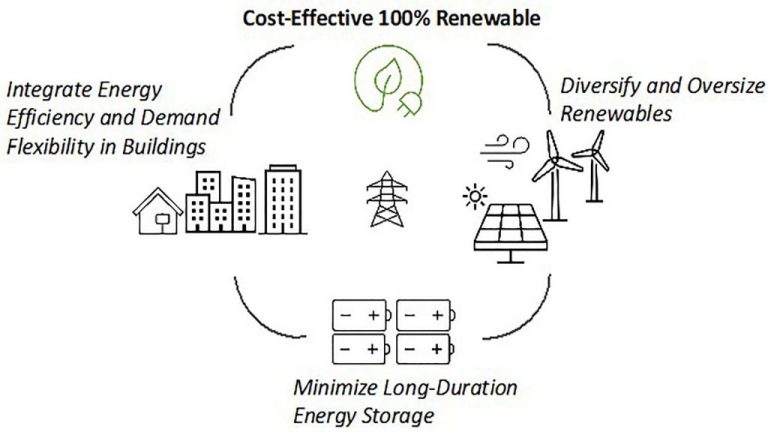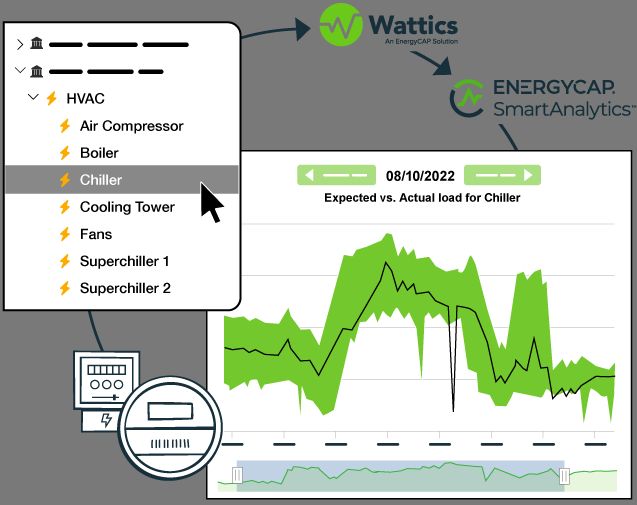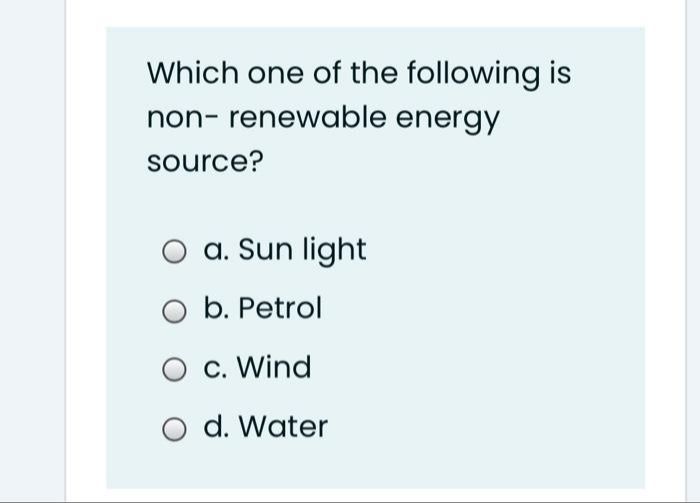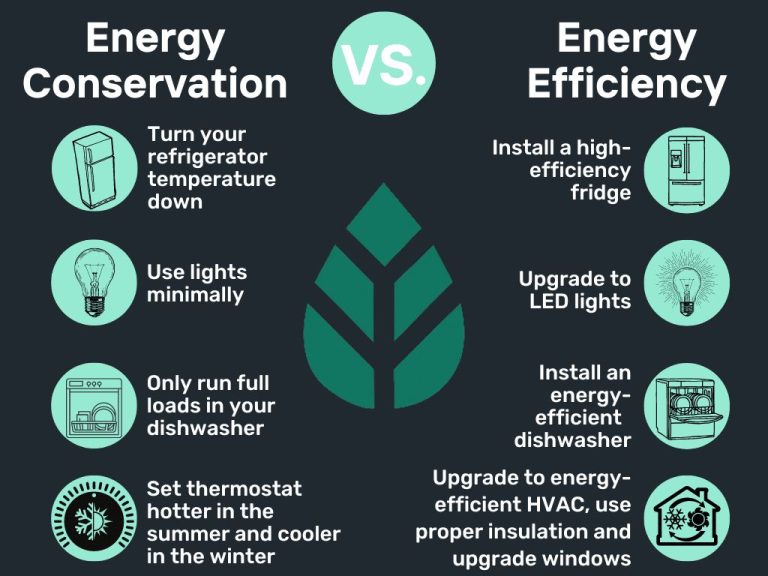What Types Of Energy Are Kinetic And Potential?
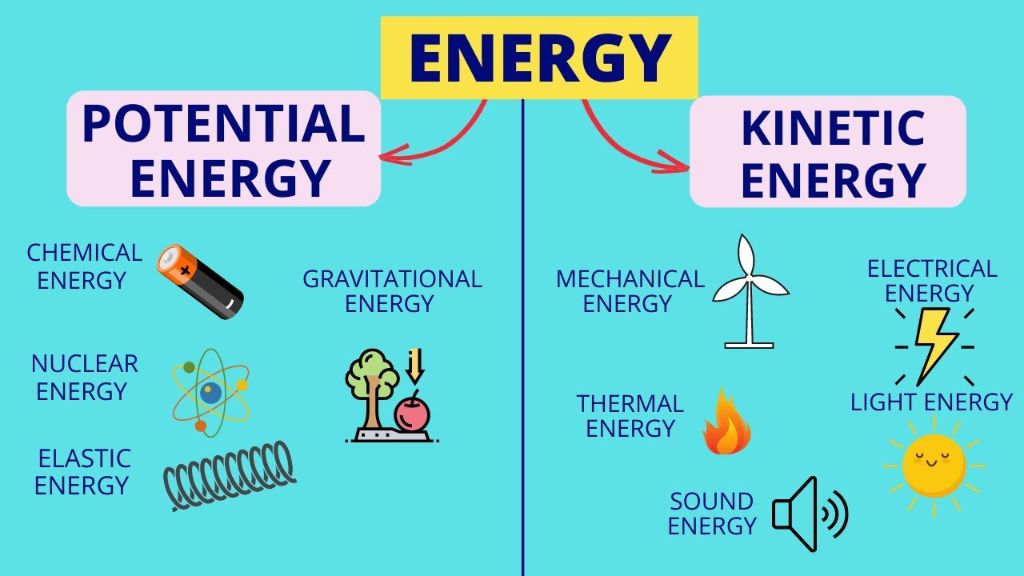
Kinetic energy and potential energy are the two main forms of mechanical energy. Kinetic energy is energy associated with motion and is proportional to an object’s mass and the square of its velocity. Potential energy is stored energy based on an object’s position or chemical configuration. There are various types of potential energy, such as gravitational potential energy and elastic potential energy.
Kinetic and potential energy can convert between each other. For example, when an object falls, its potential energy converts into kinetic energy. The sum of kinetic and potential energy in a closed system remains constant. This is known as the conservation of energy principle. Understanding kinetic and potential energy and how they convert is useful for solving physics problems and analyzing mechanical systems.
Kinetic Energy
Kinetic energy is the energy of motion. An object that has motion – whether it is vertical or horizontal motion – has kinetic energy. Some examples of kinetic energy are a person walking, a ball being thrown, or a car driving on the road. The faster an object moves, the more kinetic energy it has (https://www.techtarget.com/whatis/definition/kinetic-energy).
Kinetic energy can be described by the formula: KE = 1/2mv^2, where m is the mass of the object and v is its velocity. This shows that kinetic energy increases exponentially with velocity. Doubling the velocity quadruples the kinetic energy. It also shows that increasing an object’s mass increases its kinetic energy (https://sciencenotes.org/what-is-kinetic-energy-kinetic-energy-examples/).
Kinetic energy is directly related to the movement of an object. As long as an object is moving, it possesses kinetic energy.
Potential Energy
Potential energy is energy that is stored and held in readiness. Unlike kinetic energy, which is energy in motion, potential energy is stored energy that has the potential to do work. There are several types of potential energy, with the most common being gravitational potential energy, elastic potential energy, chemical potential energy, and nuclear potential energy.
Gravitational potential energy is energy stored in an object due to its height relative to the ground or some other object. For example, a rock resting at the top of a hill contains more potential energy than one at the bottom. As the rock falls, this potential energy gets converted into kinetic energy. Gravity is the force that causes this change in energy (
Examples of Potential Energy).
Elastic potential energy refers to energy stored in elastic materials that are stretched or compressed. Common examples are springs and rubber bands. Chemical potential energy exists in the bonds between atoms and molecules. This energy can be released in chemical reactions. Nuclear potential energy is the energy stored in the nucleus of an atom. It is released in nuclear reactions or radioactive decay (
What Is Potential Energy? Potential Energy Examples).
Forms of Kinetic Energy
There are several different forms of kinetic energy based on the type of motion involved (“Types of Kinetic Energy | Physics”). The main types of kinetic energy include:
Radiant Energy
Radiant energy is the kinetic energy associated with electromagnetic waves such as light, radio waves, gamma rays, and microwaves. This energy travels in the form of oscillating electric and magnetic fields and does not require a medium to travel through (“Types of Kinetic Energy – Concept | Physics”).
Thermal Energy
Thermal energy arises from the random motion of atoms and molecules in matter. The higher the temperature of matter, the greater the thermal motion and kinetic energy of the particles (“Types of Kinetic Energy | Physics”).
Sound Energy
Sound energy is the kinetic energy associated with the vibration or oscillation of particles in matter. It is transmitted by longitudinal waves through substances like air, water and solids (“Types of Kinetic Energy – Concept | Physics”).
Electrical Energy
Electrical energy arises from the movement of electrically charged particles such as electrons and protons. It can be transferred through conduction in electrical circuits (“Notes on Types of Kinetic Energy”).
Mechanical Energy
Mechanical energy is the sum of a body’s kinetic and potential energy. It is associated with the motion and position of physical objects and systems like oscillating springs, moving vehicles, and rotating turbines (“Types of Kinetic Energy | Physics”).
Forms of Potential Energy
There are several main forms of potential energy:
Chemical Potential Energy
Chemical potential energy is energy stored in the bonds between atoms and molecules. Chemical reactions and nuclear reactions release this energy when the bonds are broken. Examples of chemical potential energy include batteries, fossil fuels, and food.
Source: https://shiken.ai/physics/forms-of-energy
Nuclear Potential Energy
Nuclear potential energy is the energy stored in the nucleus of an atom. It is released when the nucleus splits (fission) or merges with another nucleus (fusion). Nuclear power plants use fission reactions to generate electricity.
Source: https://www.jove.com/science-education/13504/types-of-potential-energy
Gravitational Potential Energy
Gravitational potential energy depends on the height of an object. As an object gets higher in a gravity field, it gains gravitational potential energy. This energy can be converted to kinetic energy if the object falls.
Elastic Potential Energy
Elastic potential energy is energy stored in objects by the deformation of materials. For example, when a spring or rubber band is stretched or compressed, elastic potential energy is stored.
Converting Between Kinetic and Potential
Kinetic and potential energy are interchangable between one another. There are examples where in one instant the object has kinetic energy and the next it has potential energy. A great example of this principle is a pendulum. At the highest point of the pendulum’s swing it has maximum potential energy. As the pendulum swings downward it begins converting that potential energy into kinetic energy. At the lowest point, the pendulum has maximum kinetic energy and minimum potential energy. As it swings upward again it begins converting the kinetic energy back into potential energy.
Another common example is a roller coaster. At the top of a hill the roller coaster train has maximum potential energy. As it travels downward it converts this into kinetic energy, reaching maximum velocity at the bottom. The kinetic energy then begins converting back into potential energy as the train travels up the next hill. This back and forth between kinetic and potential energy allows the roller coaster to operate.
Conservation of Energy
According to the law of conservation of energy, the total amount of energy in an isolated system remains constant. This means that energy can never be created or destroyed, only converted from one form to another. For example, potential energy can be converted to kinetic energy. When a ball falls off a table, its potential energy is converted to kinetic energy as it gains speed. The total amount of energy before and after the fall remains the same.
The law of conservation of energy can be expressed mathematically as:
KEi + PEi + Wnc + OEi = KEf + PEf +OEf
Where KE is kinetic energy, PE is potential energy, Wnc is work done by non-conservative forces, OE is all other forms of energy, and i and f stand for initial and final states. According to this equation, the total energy in the initial state (KEi + PEi + Wnc + OEi) must equal the total energy in the final state (KEf + PEf +OEf). The energy transforms from one type to another, but the total amount stays constant.
The law of conservation of energy is a fundamental law of physics and holds true for all interactions and processes.
Real World Examples
In everyday life, there are many examples of kinetic and potential energy. Batteries are a good example of potential energy being converted into kinetic energy. The chemical energy stored in a battery is converted into electrical energy to power devices. Dams are another example, where the potential energy of water held behind the dam is converted into kinetic energy as the water flows through turbines to generate electricity. Springs also demonstrate potential energy, as the elastic potential energy stored when compressed or stretched is converted into kinetic energy when released.
Some other common examples include:
- Rolling balls – the kinetic energy of a rolling ball is converted into gravitational potential energy as it rolls up a hill.
- Pendulums – the swinging pendulum converts between kinetic energy at the bottom of the swing to gravitational potential energy at the top of the swing.
- Raised weights – the potential energy of the raised weight is converted to kinetic energy as gravity accelerates it downwards.
In each example, energy is transferred between kinetic and potential forms while the total mechanical energy remains constant, demonstrating the law of conservation of energy. Real-world systems provide many opportunities to observe these important energy concepts in action.
Importance and Applications
Understanding kinetic and potential energy has many important practical applications, especially in the fields of engineering and renewable energy. Engineers utilize principles of kinetic and potential energy to design a wide range of devices and systems. For example, hydroelectric dams convert the potential energy of elevated water into kinetic energy to generate electricity. Wind turbines and solar panels also harness kinetic and potential energy to produce power.
Kinetic and potential energy concepts allow engineers to improve efficiency and optimize the performance of machines and processes. Knowing how to convert between different forms of energy enables the creation of hybrid renewable energy systems.
Furthermore, knowledge of kinetic and potential energy is foundational in physics and plays a role in many key theories like thermodynamics and quantum mechanics. The ability to mathematically describe energy transformations makes accurate predictions possible. Conservation of energy is considered one of the most fundamental laws in physics.
In summary, kinetic and potential energy are vitally important for developing renewable power sources, engineering solutions, and advancing scientific understanding of the physical world.
Summary
To summarize, kinetic energy is the energy of motion while potential energy is stored energy based on an object’s position or shape. The main forms of kinetic energy are radiant, thermal, sound, electrical, and mechanical energy. The main forms of potential energy are gravitational, elastic, chemical, nuclear, and electromagnetic energy. Energy can convert between kinetic and potential forms, but the total energy in a closed system remains constant according to the law of conservation of energy. Examples of kinetic and potential energy conversions include a roller coaster ride, a pendulum swinging, and objects falling. Understanding the differences between kinetic and potential energy and how they can change forms is important for explaining many scientific and engineering applications.

